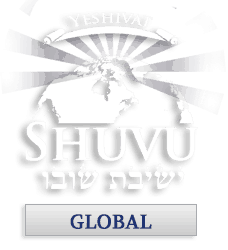וַיְדַבֵּ֥ר יְהֹוָ֖ה אֶל־משֶׂ֥ה לֵּאמֹֽר: צַ֚ו אֶת־בְּנֵ֣י יִשְׂרָאֵ֔ל וְאָֽמַרְתָּ֖ אֲלֵהֶ֑ם אֶת־קָרְבָּנִ֨י לַחְמִ֜י לְאִשַּׁ֗י רֵ֚יחַ נִֽיחֹחִ֔י תִּשְׁמְר֕וּ לְהַקְרִ֥יב לִ֖י בְּמֽוֹעֲדֽוֹ: וְאָֽמַרְתָּ֣ לָהֶ֔ם זֶ֚ה הָֽאִשֶּׁ֔ה אֲשֶׁ֥ר תַּקְרִ֖יבוּ לַֽיהֹוָ֑ה כְּבָשִׂ֨ים בְּנֵֽי־שָׁנָ֧ה תְמִימִ֛ם שְׁנַ֥יִם לַיּ֖וֹם עֹלָ֥ה תָמִֽיד: אֶת־הַכֶּ֥בֶשׂ אֶחָ֖ד תַּֽעֲשֶׂ֣ה בַבֹּ֑קֶר וְאֵת֙ הַכֶּ֣בֶשׂ הַשֵּׁנִ֔י תַּֽעֲשֶׂ֖ה בֵּ֥ין הָֽעַרְבָּֽיִם:
The Lord spoke to Moses, saying: Command the children of Israel and say to them: My offering, My food for My fire offerings, a spirit of satisfaction for Me, you shall take care to offer to Me at its appointed time. And you shall say to them: This is the fire offering which you shall offer to the Lord: two unblemished lambs in their first year each day as a continual burnt offering. The one lamb you shall offer up in the morning, and the other lamb you shall offer up in the afternoon.
Numbers 28:1-4
This week’s Torah portion contains a section regarding the Moadim. When we think about the Moadim, we look to Leviticus chapter 23. However, in parshat Pinchas there is another listing of all of the Moadim. However, this listing is from an entirely different perspective.
Numbers 28 and 29 list the Moadim from the perspective of Temple service, not of individual observance. All of the sacrifices and offerings performed in the Temple are laid out; many of these sacrifices and offerings are not seen in Leviticus 23. For instance, the sacrifices for the nations are listed in Numbers 29, they are not seen in Leviticus 23.
Numbers 28 begins with the most important sacrifice in all of the Temple service, the Tamid offering. The Tamid, or continual offering, is offered every day, one sacrifice at dawn, the other sacrifice at dusk. All sacrifices and offerings are brought between the two Tamid offerings. The first sacrifice of the day is the Tamid offering. The last sacrifice of the day is the Tamid offering. No sacrifice or offering is considered valid unless it occurs between the two Tamid offerings.
“Without blood, there is no remission of sin.” Hebrews 9:22. It is often taught that this verse indicates that a blood offering for sin must occur for remission of that sin. This creates machloket, because in Leviticus it clearly states that a grain offering is an acceptable sin offering for a poor person, Leviticus 5:11. How could a grain offering be acceptable if blood is required?
This question is only a machloket if the asker is unfamiliar with the Temple service. The blood that is referenced in Hebrews 9:22 is not the blood of a sin offering, rather, it is the blood of the Tamid offering. No sin offering may be brought in the Temple until the Tamid sacrifice is made in the morning. No offering may be brought to the Temple after the Tamid sacrifice is made at dusk. Therefore, blood must be shed; for any sacrifice or offering to be valid, the Tamid sacrifice must be made first.
As we are now in Bein HaMitzarim, Between the Straits, the three weeks, we recall one of the tragedies of the 17th of Tammuz was the cessation of the Tamid offering. During the siege of Nebuchadnezzar, we ran out of sacrificial lambs and could not bring the Tamid offering. Temple services ceased. Our sins of idol worship and ignoring the Shmitta lead us to the sin of not bringing the Tamid offering. Sin begets sin. Shabbat shalom.
